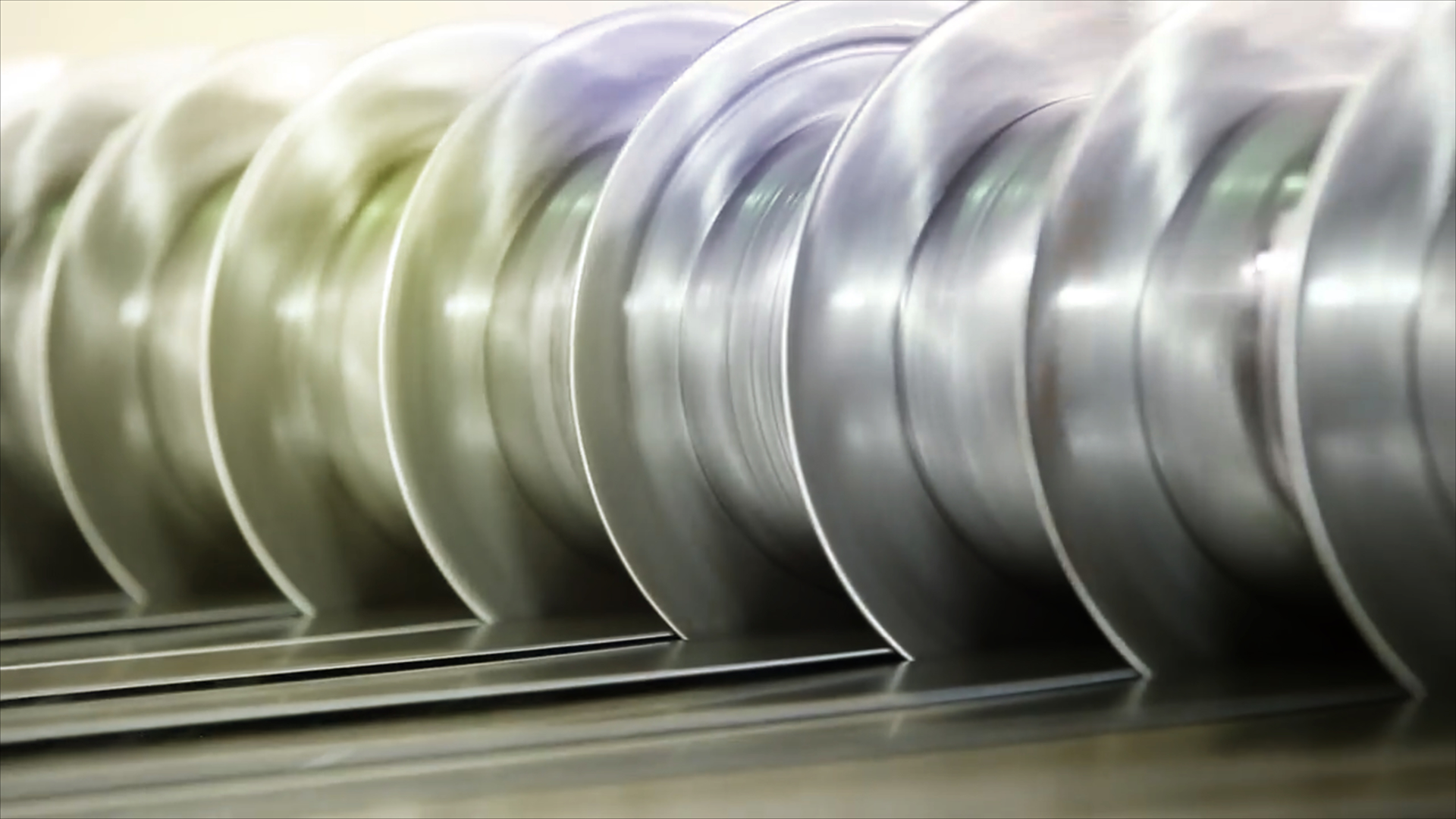Stainless Steel for LNG and Hydrogen Storage Infrastructure
The transition toward cleaner energy systems is accelerating demand for storage materials that can handle extreme temperatures, high pressures, and corrosive environments. Liquefied natural gas (LNG) and hydrogen are at the center of this transformation and stainless steel plays a crucial role in enabling secure, long-lasting infrastructure for both.
At Action Stainless, we supply high-performance stainless steel in sheet, plate, pipe, and bar form that meets the demands of LNG and hydrogen storage applications. With in-house saw cutting, polishing, value-added services, and a wide range of grades in stock, we support manufacturers, fabricators, and tank builders with reliable material supply tailored to harsh energy environments.
Why Stainless Steel Is Essential in Cryogenic Energy Systems
Storing LNG and hydrogen requires materials that remain stable and durable even at cryogenic temperatures. LNG is stored at approximately -260°F (-162°C), and hydrogen at even lower levels down to -423°F (-253°C). These extreme conditions place intense stress on conventional metals.
Stainless steel maintains toughness and ductility in cryogenic conditions while resisting corrosion from gas impurities, condensation, and environmental exposure. It also offers excellent weldability, which is essential for assembling pressure vessels and large-scale tanks without compromising safety.
Because of these characteristics, stainless steel is a proven material for:
- Cryogenic transport vessels
- Double-walled vacuum-insulated tanks
- LNG fueling infrastructure
- Hydrogen storage cylinders
- Gas pipeline components
- Valve and pump housings
Unlike carbon steel, which becomes brittle at low temperatures, stainless steel maintains both mechanical integrity and chemical resistance, making it ideal for long-term storage.
Key Stainless Grades for LNG and Hydrogen Projects
Action Stainless maintains inventory of common and specialized grades suited for cryogenic and pressure service, especially those used in LNG terminals and hydrogen processing facilities. The following grades are widely used in this segment:
| Stainless Grade | Primary Strength | Typical Applications |
|---|---|---|
| 304 / 304L | Excellent cryogenic toughness; corrosion resistant | LNG tanks, hydrogen vessels, pipes |
| 316 / 316L | Added molybdenum boosts chemical resistance | Marine terminals, chemical hydrogen storage |
| 321 | Stabilized against intergranular corrosion | Heat-affected zones, high-temp sections |
| 310S | Excellent scaling resistance at elevated temps | Transition piping and exhaust components |
| 2205 Duplex | High strength, chloride resistance | Offshore hydrogen platforms, high-pressure zones |
All grades can be cut, prepped, and delivered to customer specifications from Action Stainless’s in-house operations. Our cut-to-length stainless plate, precision-processed round bar, and custom sheet options support both prototype and production-scale fabrication.
Mechanical Requirements in Storage Infrastructure
Storage systems for LNG and hydrogen must meet stringent mechanical requirements, especially in terms of tensile strength, elongation, and impact toughness at low temperatures. Stainless steel offers consistent performance across these metrics without the risk of failure due to embrittlement.
For instance, 304L and 316L stainless maintain ductility and impact strength even at cryogenic temperatures. This allows for tank walls, piping, and structural supports to remain secure throughout thermal cycling, fill-drain cycles, and extended service life.
Stainless grades also offer consistent weldability, ensuring structural integrity at seams and joints, an essential requirement in hydrogen systems, which are particularly vulnerable to leakage and hydrogen embrittlement in subpar weld zones.
Chemical Compatibility and Corrosion Resistance
Hydrogen and natural gas can both carry trace contaminants that accelerate corrosion especially sulfur compounds, moisture, and acids formed during condensation. In coastal terminals or offshore energy facilities, salt-laden environments also increase the risk of pitting and crevice corrosion.
Stainless steel, particularly 316L and duplex grades, offers excellent corrosion resistance even in these demanding environments. The presence of molybdenum and chromium in these alloys prevents surface breakdown and extends the life of vessels, tubing, and transfer lines.
This resistance reduces maintenance needs and supports compliance with safety codes that mandate long service intervals and leak-proof operation in energy infrastructure.
Forming and Fabrication Efficiency
Stainless steel’s formability is a key advantage in LNG and hydrogen infrastructure. Whether creating domed tank heads, curved piping, or precision-cut panels, grades like 304 and 316 respond well to rolling, cutting, and welding processes.
At Action Stainless, we support custom fabrication needs with services including:
- Saw cutting of plate, pipe, and bar to precise lengths
- Polishing for smoother weld zones and hygiene-critical surfaces
- In-house inventory of cold-rolled and hot-rolled materials
- Fast turnaround to meet urgent project timelines
By offering full-service processing in-house, we eliminate the need to outsource materials to third parties saving time and ensuring dimensional accuracy from start to finish.
Compliance and Traceability in Energy Projects
All materials used in cryogenic or pressurized energy systems must meet standards like:
- ASTM A240 for stainless plate
- ASTM A312 for welded pipe
- ASTM A479 for bar and shapes
- ASME Boiler and Pressure Vessel Code (where applicable)
Action Stainless provides full
material certification with every order, including mill test reports (MTRs), batch traceability, and documentation required for regulated energy infrastructure. We work closely with fabricators and engineers to ensure that the material delivered is code-compliant and ready for inspection.
Inventory Readiness for Rapid Projects
Whether you're building a new LNG terminal or retrofitting hydrogen fueling systems, material availability can make or break project timelines. Action Stainless offers a deep inventory of sheet, plate, tube, pipe, and bar in cryogenic-grade stainless to keep projects moving without delay.
We stock standard sizes, custom thicknesses, and polished or pickled finishes, with flexible shipping options across North America.
Our team is trained to meet the demands of energy and infrastructure markets, helping clients stay on schedule and within spec from design to final installation.
Choosing the Right Stainless for Your Application
Material selection in LNG and hydrogen storage infrastructure should be based on more than just corrosion resistance. Key considerations include:
- Operating temperature and pressure
- Exposure to corrosive elements (chlorides, acids, sulfides)
- Weld zone stability
- Forming and fabrication needs
- Certifications and code compliance
- Delivery timelines
Action Stainless works directly with project engineers and fabricators to recommend the right grade, finish, and condition for your job. Whether you’re sourcing 304L sheet for tank fabrication or duplex bar for offshore hydrogen systems, we offer the technical knowledge and material support you need.
Applications Across the Supply Chain
Stainless steel is used across multiple points in the LNG and hydrogen value chains, including:
- Storage tanks and containment vessels
- Cryogenic tankers and ISO containers
- Valve components and safety systems
- Transfer piping and flexible hose assemblies
- Skid-mounted storage and metering units
- Fueling stations and hydrogen electrolyzers
Every one of these components depends on reliable material strength, weldability, and corrosion resistance making stainless the go-to choice in modern energy storage.
Why Work With Action Stainless?
Action Stainless is not just a distributor. We are a processing partner to manufacturers building the next generation of LNG and hydrogen infrastructure.
What sets us apart:
- All processing done in-house – no third-party outsourcing
- Extensive stainless inventory in cryogenic and corrosion-resistant grades
- Value-added services including polishing, cutting, and custom packaging
- Fast turnaround and competitive lead times
- Knowledgeable support for engineers, fabricators, and procurement teams
We help energy-sector clients secure materials that meet the most demanding safety and performance standards on time, and to spec.
FAQs: Stainless Steel in LNG & Hydrogen Storage
What grades of stainless are best for cryogenic applications?
304L, 316L, and 321 are commonly used in cryogenic environments. They maintain strength and ductility at extremely low temperatures.
Does Action Stainless supply certified stainless materials for LNG tanks?
Yes. We provide full certification and traceability for stainless steel plate, sheet, pipe, and bar.
Can stainless steel be used for hydrogen storage safely?
Yes. Stainless steel is used widely in hydrogen infrastructure due to its resistance to hydrogen embrittlement and weld integrity.
Is duplex stainless appropriate for high-pressure hydrogen storage?
Duplex grades like 2205 offer excellent strength and are often used in high-pressure or offshore hydrogen systems.
Does Action Stainless perform cutting and prep in-house?
All cutting, polishing, and prepping is done in-house. We do not outsource any processing work.







